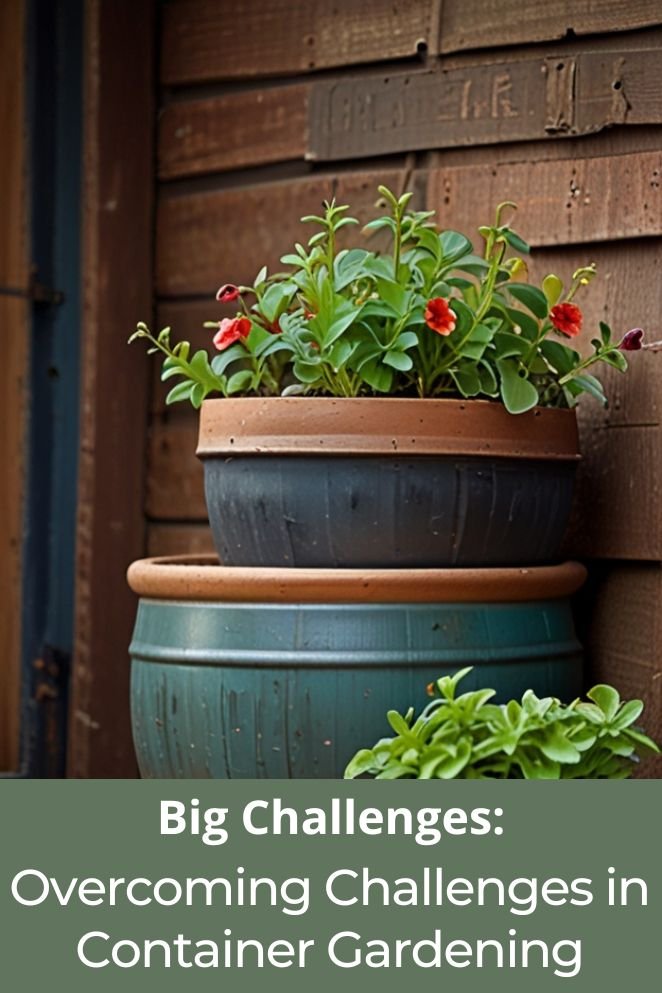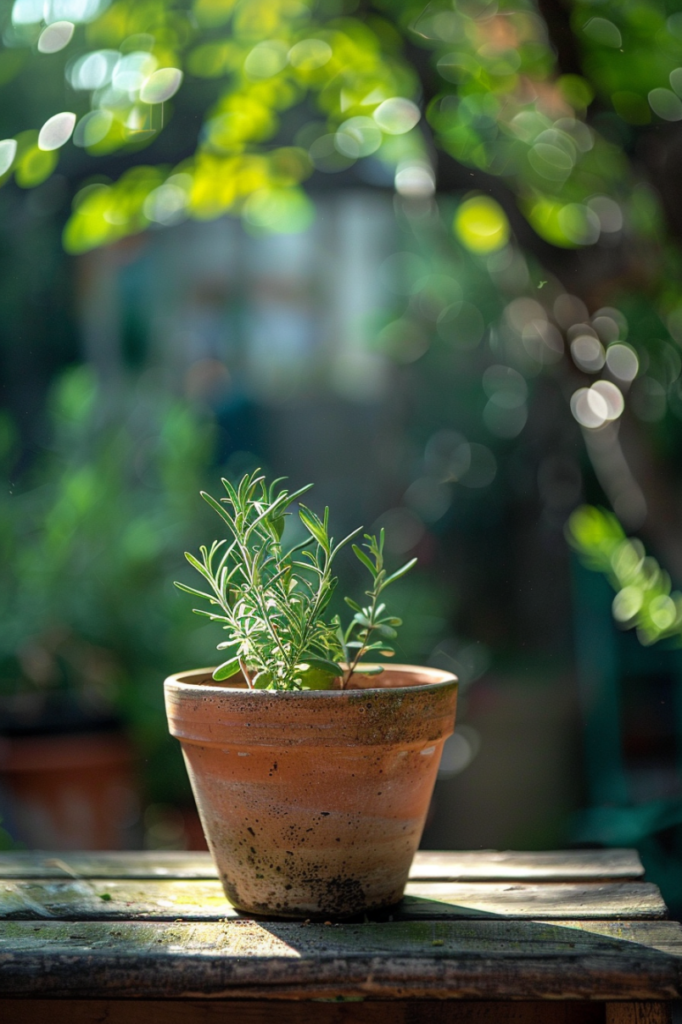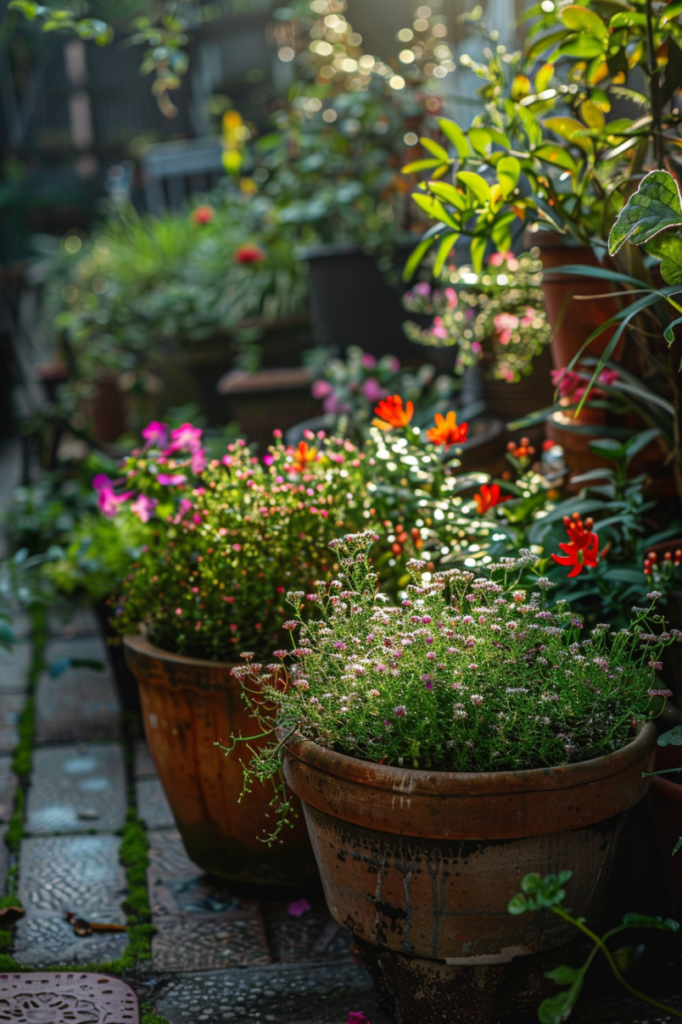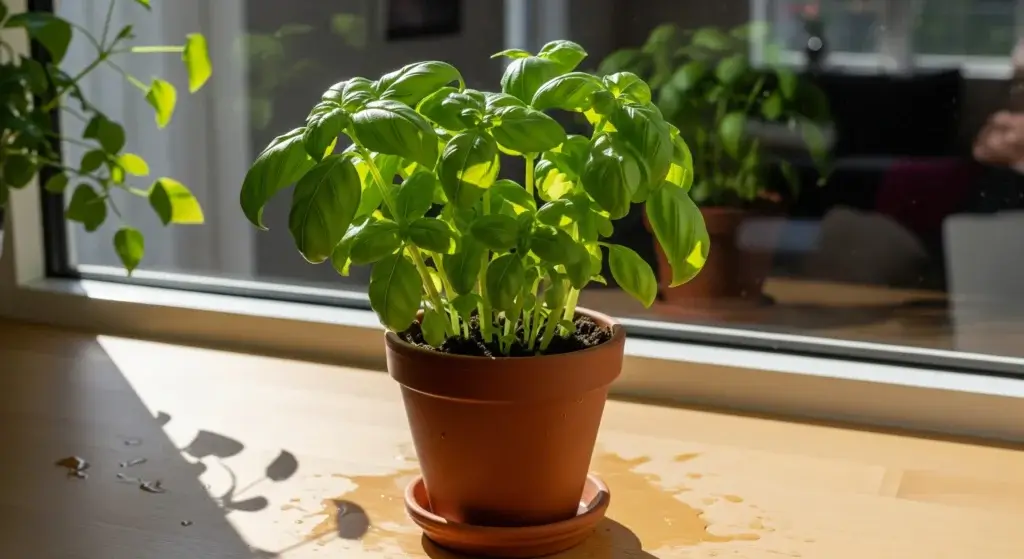
Container gardening is a fantastic way to grow plants in small spaces, allowing urban dwellers and those with limited yard space to enjoy the benefits of gardening.
However, it’s not without its challenges.
In this article, we’ll explore the common hurdles faced by container gardeners and provide practical solutions to ensure your container garden thrives.
Container Gardening and Its Benefits
Container gardening is the practice of growing plants in containers instead of directly in the ground.
These containers can be anything from pots and planters to hanging baskets, window boxes, or even repurposed buckets and barrels.
Container gardening offers numerous benefits:
Mobility advantage
Containers can be moved to different locations to optimize exposure to sunlight.
As the seasons change, you can relocate containers to protect plants from extreme weather conditions.
For example, you can bring plants indoors during the winter or move them to shaded areas during peak summer heat.
- Read also: From Trash to Table: DIY Container Ideas For Herbs
- Read also: Grow Anywhere: DIY Container Ideas For Vegetables
Space efficiency
Ideal for apartments, balconies, patios, and small yards, container gardening allows you to grow a variety of plants even in limited spaces.
Vertical gardening techniques, such as stacking pots or using hanging baskets, can further maximize space.
It enables city dwellers to cultivate gardens in places where traditional gardening is impossible due to lack of ground space.
Total Soil Type Control
With container gardening, you have complete control over the type of soil used.
This allows for the creation of optimal soil conditions tailored to the specific needs of each plant, which is harder to achieve in traditional garden beds.
Reduced pests and diseases
Container plants are often physically separated from pests and diseases that may be present in the ground.
This can lead to fewer problems and easier management of any issues that do arise.
Easier maintenance
Weeding is a breeze with container gardens!
The smaller, contained growing area means less weeding and overall maintenance compared to traditional gardens.
Fresher, homegrown food
You can grow your own herbs, vegetables, and even some fruits in containers.
This allows you to enjoy the taste of fresh, homegrown produce and know exactly what goes into your food.
Decorative appeal
Containers come in various shapes, sizes, and colors, adding aesthetic value to your living spaces.
You can create visually pleasing arrangements that enhance the beauty of your home or garden.

Common Challenges in Container Gardening
Container gardening is a great way to grow plants if you have limited space or want to add some greenery to your patio or balcony.
However, there are a few challenges that you need to be aware of before you get started:
Watering technique
One of the biggest challenges of container gardening is watering.
Because containers are small and exposed to the sun and wind, the soil can dry out quickly.
You will need to water your container plants more frequently than you would water plants in the ground.
Drainage system
Another important aspect of watering is drainage.
Make sure your containers have drainage holes in the bottom to allow excess water to drain away.
Overwatering can lead to root rot, which is a deadly condition for plants.
Space container
Containers have limited soil volume, restricting root growth and plant size.
Plants that require a lot of space to spread out or have deep roots may not do well in containers.
Sunlight requirements
Different plants have different sunlight requirements.
When choosing plants for your container garden, be sure to consider the amount of sunlight they will receive.
If your balcony or patio gets full sun all day long, you will need to choose plants that can tolerate hot and dry conditions.

Temperature fluctuations
Plants grown in containers are more likely to experience significant changes in temperature.
These fluctuations can be more extreme than those experienced by plants in the ground, which can lead to stress and potentially harm the plants.
Plant selection
Container gardening offers a lot of flexibility.
However, not all plants are suitable for container gardening due to factors such as their specific soil, light, and water requirements.
Some plants may thrive in the ground but struggle in containers, while others may be more adaptable and benefit from the controlled environment of a container.
For example, plants that are sensitive to extreme temperatures or require specific soil compositions may not be suitable for container gardening.
Nutrient Depletion
Nutrients in container soil can deplete quickly.
Nutrient depletion in container soil is a common issue that can occur due to various factors such as poor drainage and inadequate soil composition.

Overcoming The Challenges
Even though container gardening has its limitations, the challenges can absolutely be overcome with some planning and knowledge!
Here’s how to tackle the most common issues:
Watering
- Using a well-draining potting mix that retains moisture.
- Use water-retaining materials like perlite or vermiculite mixed into the soil to help retain moisture.
- Check soil moisture regularly and water deeply when the soil feels dry to the touch.
- Grouping plants with similar water needs together.
Drainage
- Choosing containers with drainage holes.
- If using a container without holes, creating them yourself or adding a layer of pebbles at the bottom for improved drainage.
Container
- Choose dwarf or compact plant varieties.
- Selecting containers that are large enough for the mature size of your chosen plants.
- Utilize vertical gardening techniques, like trellises and hanging pots, to maximize space.
Sunlight
- Selecting plants based on the amount of sunlight your balcony or patio receives.
- Rotating containers throughout the day to provide even sun exposure for some plants.
- Utilizing hanging baskets or vertical gardening structures to maximize sun exposure in limited space.
Temperature
- Move containers to shaded areas during extreme heat.
- Insulate them with materials like bubble wrap during cold snaps.
- Select plants that are resilient to temperature fluctuations.
Plant
- Choose plants known to thrive in containers.
- Consider the mature size and light requirements of the plants.
- Herbs, compact vegetables, and small flowers are often good choices.
Nutrient
- Feed plants regularly with a balanced, water-soluble fertilizer.
- Use slow-release fertilizers.
- Repotting your plants every growing season with a fresh potting mix to replenish nutrients.

- Read also: Potted Perfection: Tips on Growing Broccoli in Containers
- Read also: A Comprehensive Guide: Growing Cauliflower in Containers
Conclusion
Container gardening can be incredibly rewarding, offering a practical solution for those with limited space.
By understanding and addressing the common challenges, you can create a beautiful and productive container garden.
Remember to choose the right plants, use quality soil, and maintain a consistent care routine.
With a little effort and attention, your container garden can flourish, providing you with fresh produce, fragrant herbs, and stunning flowers.
FAQs
Watering frequency depends on the type of plants, container size, and weather conditions. Generally, check the soil moisture daily and water when the top inch is dry.
Use a high-quality potting mix designed for containers. Avoid using garden soil, as it can be too heavy and compacted for containers.
Regularly inspect your plants for pests, use natural pest control methods, and ensure good air circulation around the containers.
Some easy-to-grow plants for beginners include basil, mint, cherry tomatoes, lettuce, and marigolds.



